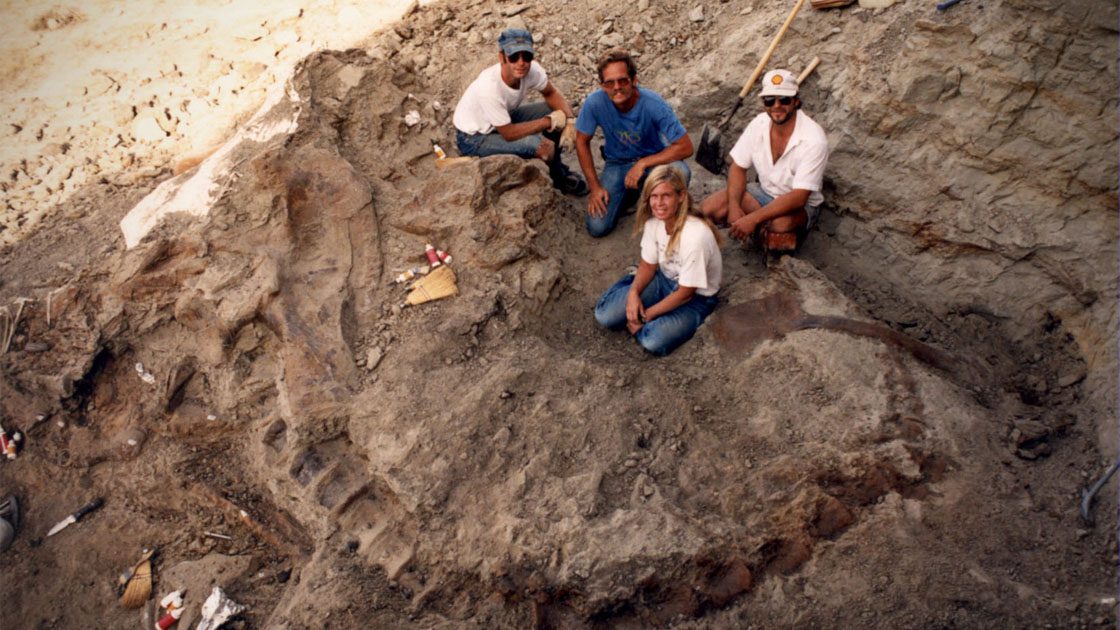We live in a beautiful era for documentaries that push narratives and transcend what audiences previously believed they once could do. Sundance debut Dinosaur 13, director Todd Douglas Miller’s first feature, will now join those ranks. Like many great films, the less you know going in, the more gripping this story will be. In 1990, Peter Larson and a team of paleontologists in South Dakota unraveled what would be the greatest discovery of their lifetime: Sue, the most intact Tyrannosaurus Rex fossil ever to be uncovered. The title Dinosaur 13 comes from the fact that this was the thirteenth T-Rex fossil to be uncovered, and as most people know, 13 is not a lucky number. In the midst of the painstaking restoration process involved with archeology, shortly after the discovery a massive legal battle involving the federal government ensued over the rights to the dinosaur bones and turned the project into a lengthy nightmare of who would get to keep the coveted Sue.
Exposing us to a narrative that few people know, Dinosaur 13 is a roller coaster of a story in the best way possible. What starts as a humble yet passionate following of a group of paleontologists becomes a conflict that is bigger than they could ever expect. There is no need to give any part of the film away because there are so many twists and turns in this story. It is documentaries like this that make me question why even bother with writing stories when there are great ones like this that are more compelling than fiction.
Paleontology is essentially the study of history and uncovering the truth in the past: Dinosaur 13 has done the same for this powerful story that should be heard by all.
There are a few points in particular that make Dinosaur 13 the type of film you can resonate with. First, this is a film about small town USA, in this case, Hill City, SD (in close proximity to the Badlands), and the power of community in places like this, both in good times and bad. Secondly, this is a film about passionate people. The subjects of the film, notably Peter Larson, the paleontologist who is the primary focus, but also the many other folks involved, all share a beautiful love of what they do. Despite all adversity, carrying passion and optimism is a beautiful thing to watch. Anyone who is passionate about their subject matter will find themselves connecting with the dedicated work of paleontologist Peter Larson, regardless of the field of interest.
From a craft standpoint, the film greatly benefits from a high quantity of archival footage. The story begins in the late 1980’s and early 1990’s. Had these events transpired 20 years before, home videos would not have been commonplace and it would have to rely more on reenactments and interviews, but instead, a good amount of the film actually uses footage, along with some reenactments and some fantastic interviews. Like any documentary that has heavy portions that take place in a courtroom, the only part that isn’t well documented is the courtroom scenes, but the film still does quite well working around them. This is made up for in the fantastic interviews of the subjects, all of whom tell their stories in a way that leaps off the screen. Fortunately, the film’s climax is rich with archival footage, allowing the film to build to its ending incredibly well. In case it isn’t already clear, this is one of the best films that I have reviewed all summer, and to anyone I would definitely recommend taking the time to watch it. Paleontology is essentially the study of history and uncovering the truth in the past: Dinosaur 13 has done the same for this powerful story that should be heard by all.
The film is now playing in select theaters and available to rent on iTunes.
H. Nelson Tracey
Nelson is a film director and editor from Denver based in Los Angeles. In addition to writing for Cinemacy, he has worked on multiple high profile documentaries and curates the YouTube channel "Hint of Film." You can check out more of his work at his website, hnelsontracey.com

